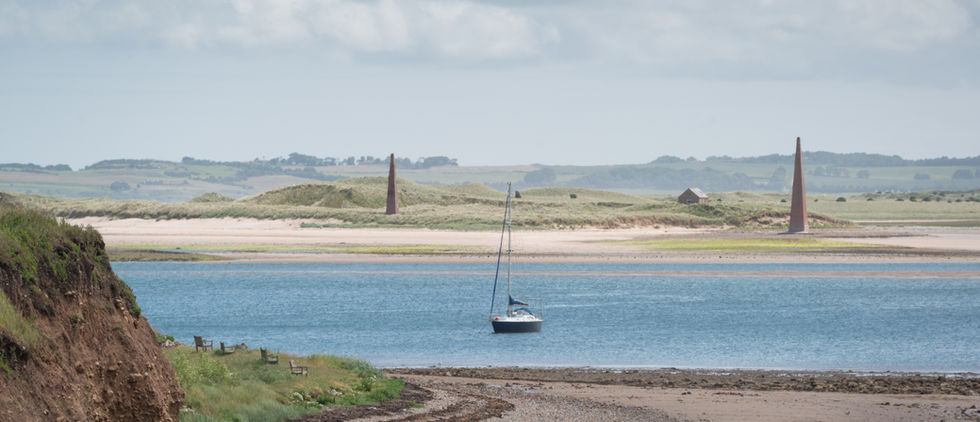Green Travel Guide to Northumberland Coast
Covering an area of 39 miles, from Berwick-upon-Tweed in the north to the Coquet Estuary near Alnmouth, the Northumberland Coast Area of Outstanding Natural Beauty takes in some of the most dramatic coastal scenery in Britain: salt marsh replete with wading birds, windblown sand dunes backed with marram grass, and an isolated archipelago – the Farne Islands – which 23 species of seabird call home. A range of diverse activities, from guided walks with a geology expert to playing with the North Sea’s largest seal colony, as well as unmissable pubs, quirky cafés and wonderful accommodation make this a great destination all year round.
All photos by Diana Jarvis
Foreword by Cllr John Woodman,
Chair of the Northumberland Coast AONB Partnership
The Northumberland Coast Area of Outstanding Natural Beauty was designated in 1958. It covers 39 miles of coast from Berwick to the Coquet estuary and contains some of Britain’s most important historic and cultural sites and some of the most dramatic coastal scenery in the country. There is solitude on even the sunniest days of summer contrasting with thriving villages, pubs and restaurants with excellent food. It is steeped in history: it is the home to Christianity in England and the capital of Anglo-Saxon Northumbria. There is a history of human occupation going back 9,000 years.
The sites are set within the stunning landscape of wide sandy beaches backed by high sand dunes and punctuated by rocky outcrops. There are internationally important seabird colonies and thousands of winter (avian) visitors feeding on the rich mudflats, not to mention one of the largest grey seal colonies in Britain. The dunes and whinstone outcrops are a blaze of colour in spring – and large parts of the area are designated sites because of the rarity of the features.
Many tourism businesses are passionate about making their own businesses greener and alongside farmers and landowners, most of whom also have tourism businesses of their own, support our work to ensure this wonderful place is looked after and enhanced for future generations to enjoy.
This Greentraveller's Guide to the Northumberland Coast will help you find these places and these people will inspire you. Whether it’s planning a car-free day or finding that different place for your picnic, their amazing local knowledge will make your visit unforgettable. Enjoy it and help us to keep it special.

Map supplied by the Northumberland Coast AONB Partnership
What Green Traveller's writers discovered along the Northumberland Coast
Stay, Eat, See & Do
Our pick of places across the Northumberland Coast
Google Map Key:
Click on the coloured icons for more information about each listing
Green = Places to stay; Blue = Places to eat; Yellow = Attractions; Purple = Activities
Click on the square brackets top right of map to reveal expanded map

-
The Farne Islands have a population of 4000 grey seals – the largest colony on the east coast of Britain – and 87,000 pairs of seabirds
-
The Northumberland Coast Path runs continuously for 100km from Cresswell to Berwick-upon-Tweed
-
There are over 25 beaches in the AONB, which are some of the cleanest beaches and bathing waters in the country
-
Lindisfarne National Nature Reserve has an endemic species of orchid – The Lindisfarne Helleborine – that grows nowhere else in the world
-
The Northumberland Coast AONB has the most impressive run of coastal castles in the country, including Warkworth, Dunstanburgh, Bamburgh and Lindisfarne
-
-
The Northumberland Coast AONB has a designated area of 138 square kilometres along 64km of the Northumberland coastline
Words by Jo Keeling. Photos by Diana Jarvis.
Artwork for Green Traveller's Guides by Tina Smith and Mark Edwards.





















